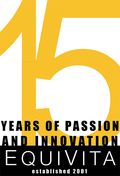Once suctioned, the cups are generally left in place for about ten minutes while the patient relaxes. The suction and negative pressure provided by cupping can loosen muscles, encourage flow of blood and lymphatic fluid, and sedate the nervous system. Cupping is used to relieve back and neck pains, stiff muscles, anxiety, fatigue, rheumatism, and a range of other conditions. It is also very beneficial for the lungs, and can clear congestion from a common cold or help to control a person's asthma. In fact, respiratory conditions are one of the most common issues that cupping is used to relieve.
Like acupuncture, cupping follows the lines of the meridians, specific patterns of energetic flow in the body. There are five meridian lines on the back, and these are where the cups are usually placed. By targeting these meridians, cupping strives to 'open' the channels providing a smoother and more free-flowing experience of qi or life energy, which in turn leads to relaxation, improved vitality, and alleviation of pain.
To get started, contact the front desk to schedule your initial appointment. 614-298-8781
Chris Cooper, Diplomate of Acupuncture

 RSS Feed
RSS Feed
